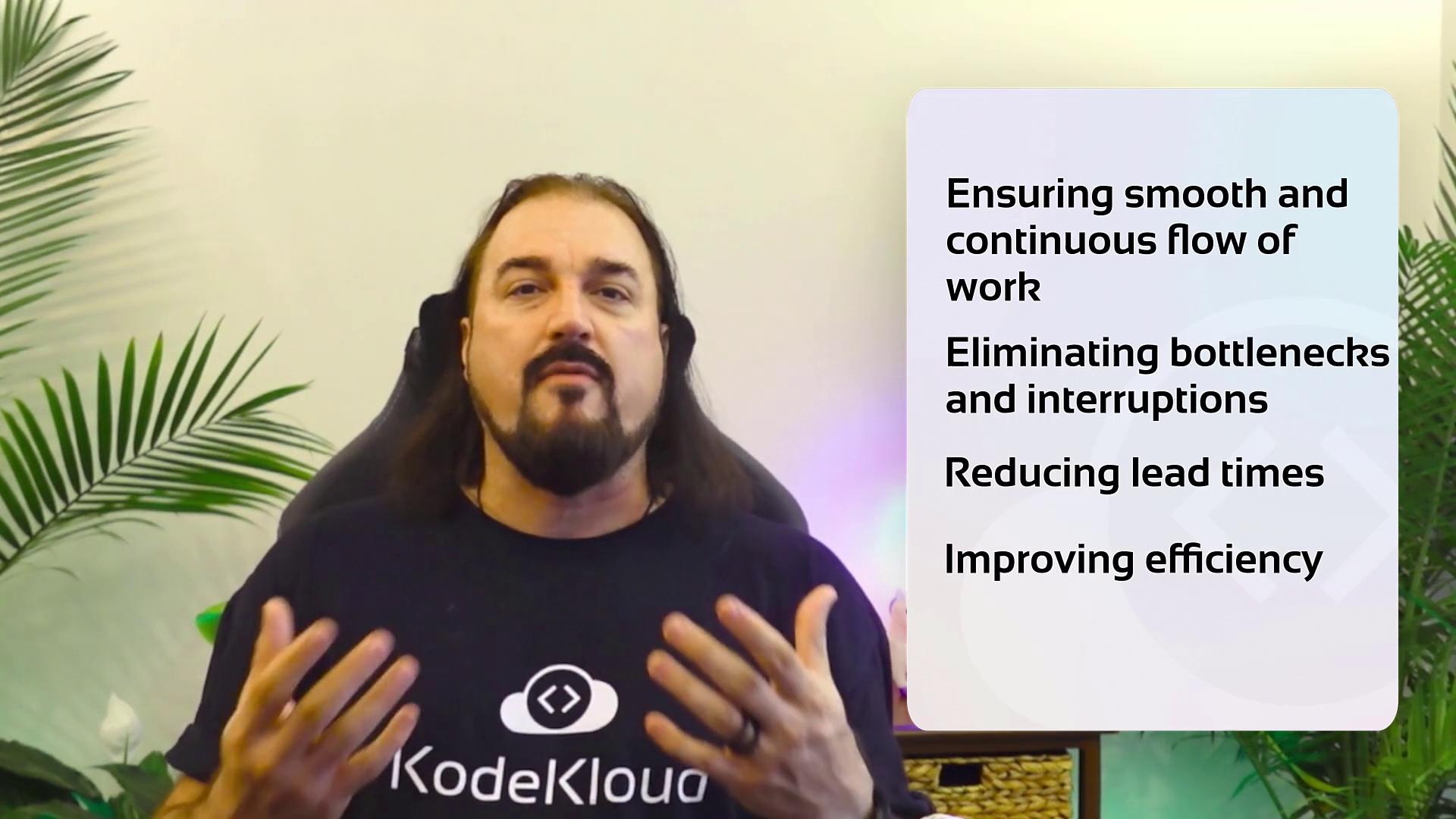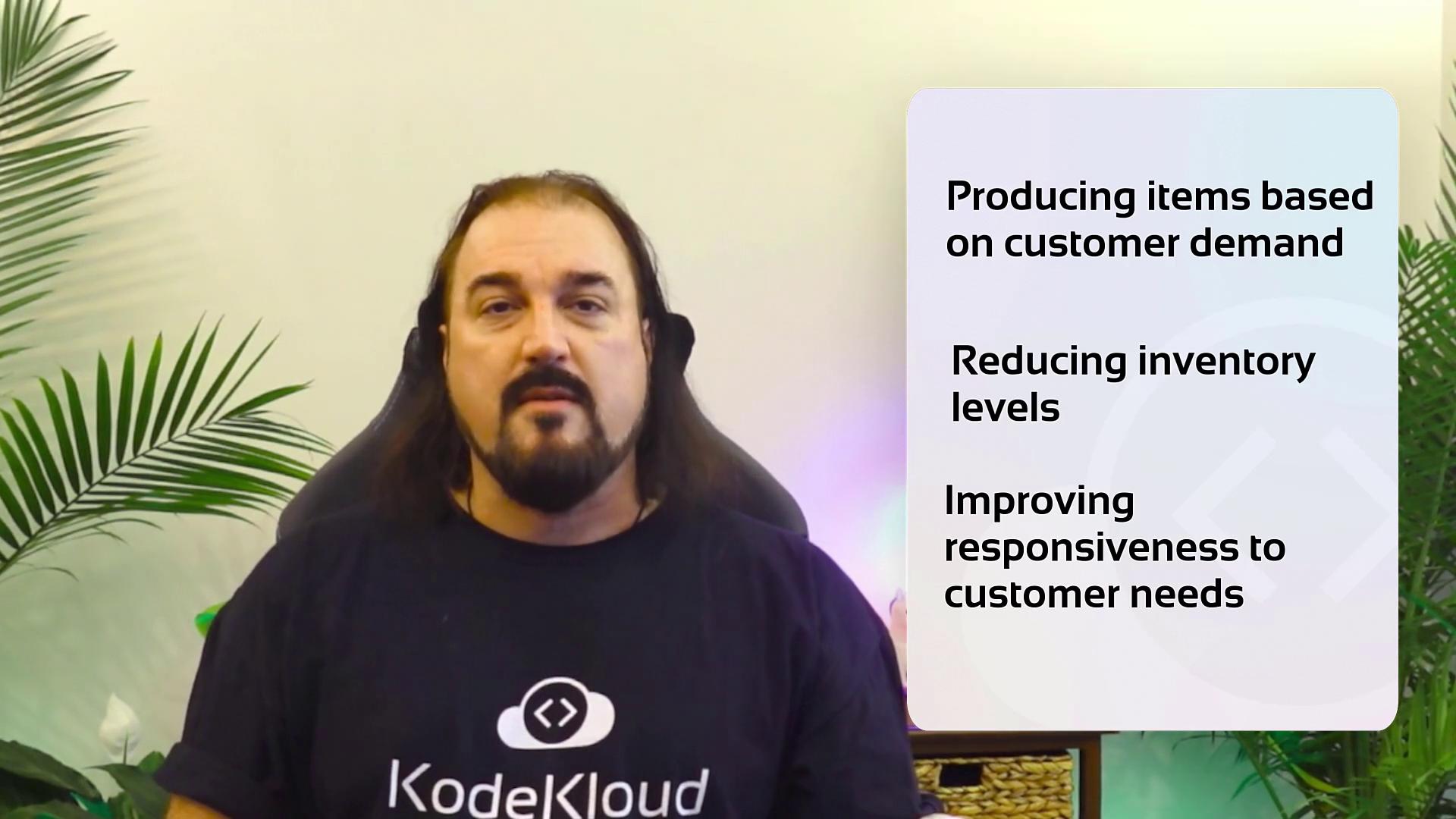Fundamentals of DevOps
Process
LEAN Considerations
Explore the core LEAN principles and discover how each attribute drives DevOps efficiency. In this article, we examine each principle, outlining its key attributes to help eliminate waste, enhance productivity, and boost customer satisfaction.
Principle 1: Define Value
Defining value means understanding what customers truly need and identifying activities that add meaningful benefits. This principle is essential for eliminating waste from processes and enhancing overall efficiency.
Key attributes include:
- Concentrating on customer requirements.
- Recognizing and eliminating non-value-adding activities.
- Minimizing waste in the production process.
- Increasing overall process efficiency.
Principle 2: Map the Value Stream
Mapping the value stream involves outlining every step in the process—from raw materials to finished product—allowing you to visually identify bottlenecks and opportunities for improvement.
Key attributes include:
- Developing a comprehensive understanding of the process lifecycle.
- Pinpointing specific steps in need of optimization.
- Continuously monitoring the process for potential constraints.
- Enhancing operational transparency and efficiency.
Principle 3: Create Flow
Creating flow is about ensuring that work processes and production steps occur in a continuous, unimpeded manner. This approach reduces lead times and minimizes delays, ensuring that products and services move seamlessly from conception to delivery.
Key attributes include:
- Establishing uninterrupted and smooth workflows.
- Removing obstacles and bottlenecks through process optimization.
- Reducing lead times from idea to production.
- Maximizing efficiency by minimizing idle wait times and resource waste.

Principle 4: Use a Pull System
The pull system principle advocates for production driven strictly by customer demand rather than forecasting or speculation. This demand-driven approach reduces excess inventory and increases the overall responsiveness of the supply chain.
Key attributes include:
- Initiating production based solely on actual customer demand.
- Lowering the costs and risks associated with excess inventory.
- Enhancing the system's ability to respond quickly to market changes.
- Focusing on efficiency by aligning production closely with consumption.

Principle 5: Pursue Perfection
The pursuit of perfection represents a continuous commitment to improvement. By evaluating processes on a regular basis and seeking incremental enhancements, organizations systematically eliminate waste and drive performance improvements.
Key attributes include:
- Committing to ongoing process improvements.
- Routinely identifying areas for enhancement.
- Focusing relentlessly on waste elimination.
- Striving for operational excellence in every aspect of production.
Note
Adopting these LEAN principles within DevOps can significantly enhance workflow efficiency and customer satisfaction by aligning production processes with actual market needs.
In summary, integrating these five core LEAN principles into your DevOps practices can lead to a more efficient, waste-free, and customer-focused operation. By defining value, mapping the value stream, creating flow, using a pull system, and pursuing perfection, organizations can achieve sustained operational excellence.
Thank you for reading.
Watch Video
Watch video content